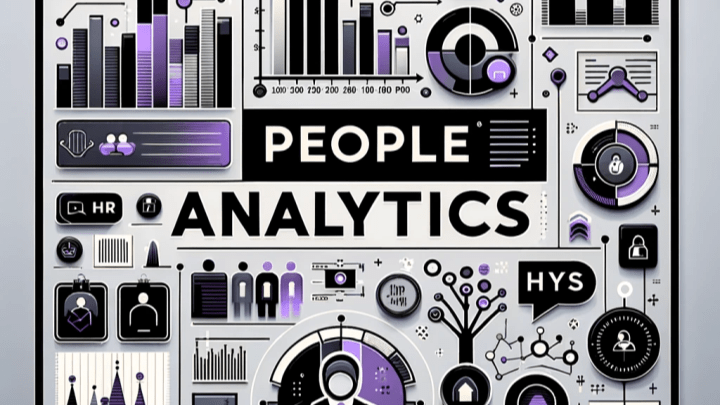This is one of my assignments for my university course – MSc in People Analytics with the University of Hull
Research Topic
The topic proposal to be researched is the use of analytics within the realm of recruitment. I am doing this as one of my clients is growing massively at the moment and they are new entirely to any HR reporting but have no real data about the recruitment process.
Over my career as an HR professional, I think this is an area that has been lacking and where analytical options could help with the recruitment process from determining what a role should look like through to the correct salary. There are a number of common metrics that can be found with a simple google search (https://www.google.com/search?q=recruitment+analytics&rlz=1C1VDKB_en-GBGB991GB991&oq=Recruitment+anal&aqs=chrome.4.69i57j0i512l2j0i457i512j0i512l3j69i60.6015j0j7&sourceid=chrome&ie=UTF-8 accessed 3rd August 2022) and in my own experience.
The most common metrics, in my experience, are:
- Time to fill
- Time to hire
- Source of hire
- Cost per hire
Whilst companies may carry out a range of analytics, a large issue within this topic is the ability to benchmark the metrics an organisation chooses to utilise. There is also an issue with how organisations define the terms used within the calculation
Thorough research into this area will help reduce the differences in organisation’s approaches to calculating metrics which will help organisations benchmark whether the metric is good or bad.
Literature Review
From a practical perspective as a HR professional and not a data scientist, the first resource I would look at, within the UK is the CIPD website. The CIPD is the UK body for HR professionals and supports research from a business and academic perspective. Their website has a section dedicated to People data and Scientific Evidence (https://www.cipd.co.uk/knowledge/strategy/analytics accessed 3rd August 2022) which is where I am beginning the literature review.
One of their research papers is Human Capital Analytics and Reporting: exploring theory and evidence which was published in May 2017 and written by Edward Houghton of the CIPD. (https://www.cipd.co.uk/knowledge/strategy/analytics/human-capital-analytics-report/). This document (page 13, table 3) identifies recruitment within the Talent Management area of HR despite stating that internal recruitment processes are favoured over external recruitment.
Another CIPD research paper is Talent Analytics and big data – the challenge for HR ( https://www.cipd.co.uk/Images/talent-analytics-and-big-data_2013-challenge-for-hr_tcm18-9289.pdf ). This paper is dated November 2013 and was produced in conjunction with Oracle (an HR software provider). This document doesn’t specify metrics but touches on the amount of data that is held within this area that can be used for analytics which can then support the business making evidence-based decisions.
In my position as a Certified Auditor for ISO30414: 2018 Human resource management — Guidelines for internal and external human capital reporting (https://www.iso.org/standard/69338.html), suggests that metrics shouldn’t be considered alone. In fact, the ISO standard has a section called Recruitment, Mobility and Turnover which has 14 suggested metrics. This ISO is part of an HR series created by the ISO/TC 260 committee which begins at 30400, specifically ISO 30400:2016 Human Resource Management – Vocabulary. Other standards (both published and in development) are:
All these ISO documents can be accessed at https://www.iso.org/committee/628737/x/catalogue/p/1/u/1/w/0/d/0) but are not freely available. This Technical Committee has 32 participating countries, a further 30 which observe the work and is led by the American National Standards Institute.
These documents, provide a basis for global benchmarking in this area yet they are not widely known about within the HR community (based on my experience)
In the book, People Analytics for dummies by M West and published in 2019, Chapter 9 has a variety of definitions of metrics that could be considered under this. This is a good start where an organisation is creating recruitment analytics for the first time. Similarly, Predictive HR Analytics: Mastering the HR Metric by Edwards & Edwards 2019 has a chapter (case study 5, pages 308 – 341) devoted to Recruitment and Selection analytics. This book has a bias towards the SPSS statistical package by IBM but the thought processes could be built into any system where a person has the ability to do this.
Introduction to People Analytics: a practical guide to data-driven HR by Khan and Miller 2020 suggests that recruitment analytics would fall within their intermediate level of types of people data ( pages 44 & 45).
People Analytics in the era of big data by Isson and Harriott (2016) have a number of chapters that cover recruitment analytics, beginning with Chapter 4, workforce planning analytics where you begin to predict the workforce needed which will then lead into recruitment and recruitment analytics (chapters 5, 6 and 8).
Data-Driven HR : how to use analytics and metrics to drive performance by Marr ( 2018) also has a whole chapter on Data-Driven Recruitment (chapter 7, from page 119)
From a methodology perspective, this research topic would look at quantitative and qualitative data. Examples of this would be the number of applicants per position and the content of CVs when compared to job descriptions.
Data sources are likely to be harder to identify. Organisations would need to be recruited to provide anonymised data at a base level in order for the research to be comparable. It is no point in organisations providing the output of metrics in place as their definitions may be slightly different (even down to measuring time to fill in days versus months as an example)
Key organisations and people to consider would be:
- CIPD
- AIHR
- HCM Metrics
- ISO
- BSI (or the national equivalent in other countries)
Challenges:
- Recruiting organisations to provide raw data to the research
- Ensuing that provided raw data contains no personal identifiable information
Research Recommendation
Based on the literature review, this is a good topic to research. There are minimal papers on this topic, although it is covered by the broader definition of people analytics. There are international standards that can be referenced and in the books I reviewed, the standards aren’t mentioned.
The benefits of conducting research into this topic are:
- More material available to recruiters
- Ability to benchmark recruitment metrics
- Ability to begin to use predictive analytics for recruitment
- Increased awareness of the subject to build AI models that make automated recruitment decisions
- Potential to remove unconscious bias from recruitment decisions
- Increased awareness of the ISO standards
- And other standards by similar bodies (BSI, ANSI etc)
References
Human Capital Analytics and Reporting, CIPD May 2017. https://www.cipd.co.uk/knowledge/strategy/analytics/human-capital-analytics-report/
Marr, B. (2018) Data-Driven HR: How to use analytics and metrics to drive performance, London: Kogan Page
Isson, JP & Harriott JS. (2016) People Analytics in the era of big data: changing the way you attract, acquire, develop and retain talent, Hoboken: Wiley.
Khan, N & Millner D. (2020) Introduction to People Analytics: a practical guide to data-driven HR, London: Kogan Page
Edwards, MR & Edwards, K. (2019) Predictive HR analytics : Mastering the HR metric, London, Kogan Page
West, M (2019) People Analytics for dummies, Hoboken: Wiley
Wong, M, & Anderson, V, & Bond, H. (2019) Human Capital Management standards: a complete guide, London: Kogan Page
International standards Office (2018) ISO 30414:2018 Human resource management — Guidelines for internal and external human capital reporting. Geneva: ISO
International standards Office (2016) ISO 30400:2016 Human Resource Management – Vocabulary. Geneva: ISO
International standards Office (2016) ISO 30405: 2016 Human resource management — Guidelines on recruitment. Geneva: ISO
International standards Office (2017) ISO/TS 30407: 2017 Human resource management — Cost-Per-Hire. Geneva: ISO
International standards Office (2016) ISO 30409:2016 Human resource management — Workforce planning. Geneva: ISO
International standards Office (2018) ISO/TS 30410: 2018 Human resource management — Impact of hire metric. Geneva: ISO
International standards Office (2018) ISO/TS 30411:2018 Human resource management — Quality of hire metric. Geneva: ISO
International standards Office (2021) ISO/TS 30421:2021 Human resource management — Turnover and retention metrics. Geneva: ISO
International standards Office (2021) ISO/TS 30428:2021 Human resource management — Recruitment metrics cluster. Geneva: ISO
CIPD (2017) Human Capital Analytics and reporting: exploring theory and evidence. London CIPD https://www.cipd.co.uk/knowledge/strategy/analytics/human-capital-analytics-report/ [accessed 03/08/2022]
CIPD (2013) Talent Analytics and big data : the challenge for HR. London. CIPD https://www.cipd.co.uk/Images/talent-analytics-and-big-data_2013-challenge-for-hr_tcm18-9289.pdf [accessed 03/08/2022]
CIPD (2022) Labour market outlook Spring 2022. London. https://www.cipd.co.uk/knowledge/work/trends/labour-market-outlook [accessed 03/08/2022]
CIPD People data and scientific evidence https://www.cipd.co.uk/knowledge/strategy/analytics [accessed 03/08/2022]
CIPD People Analytics: driving business performance with people data https://www.cipd.co.uk/knowledge/strategy/analytics/people-data-driving-performance [accessed 03/08/2022]




